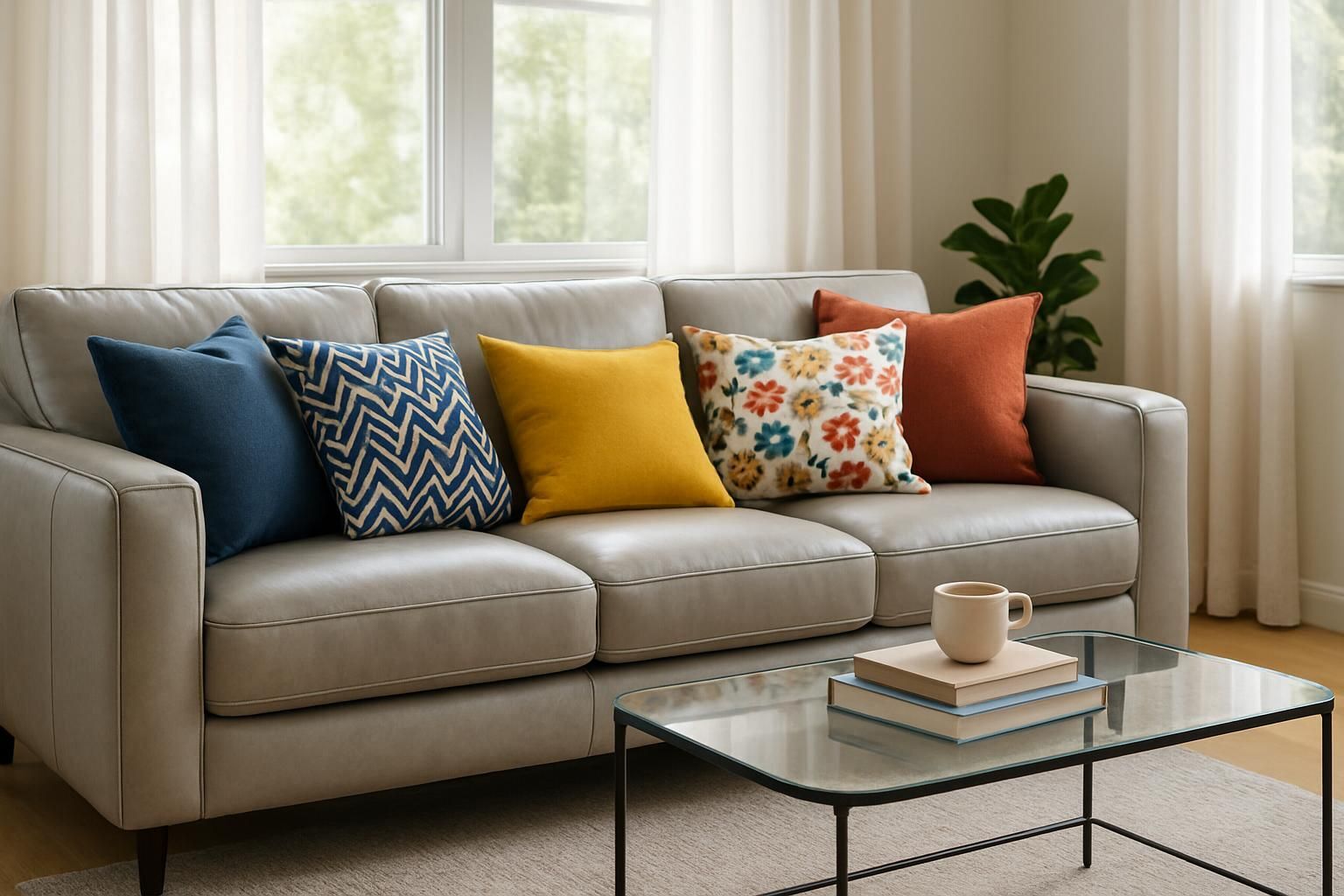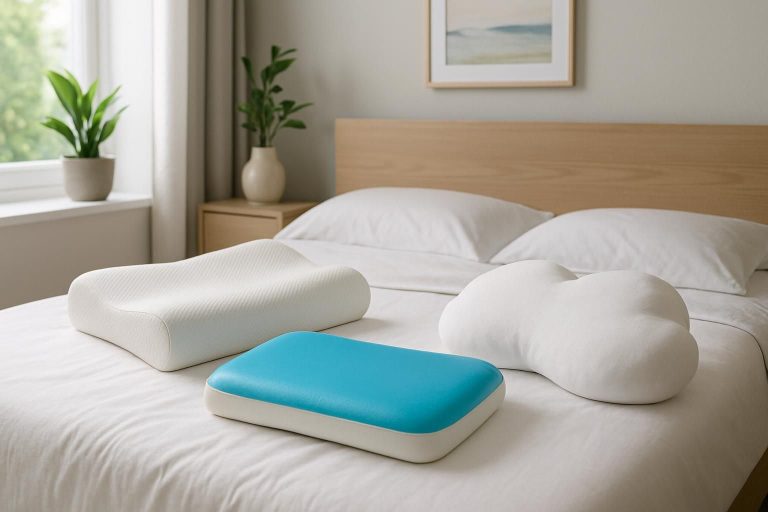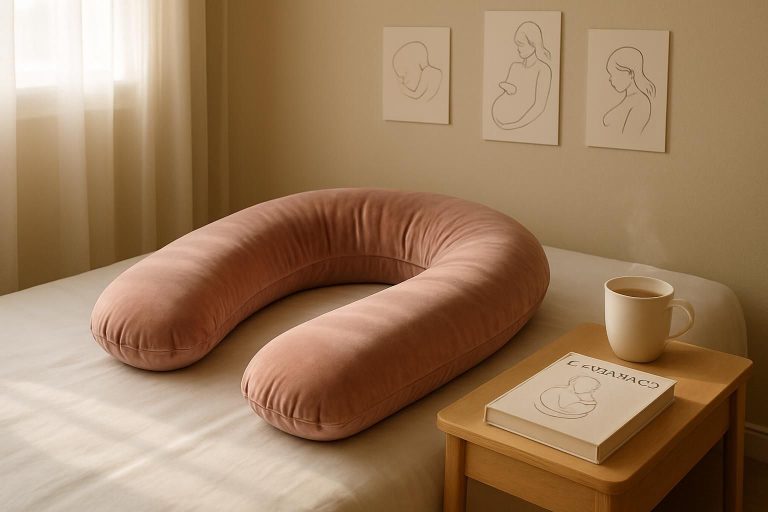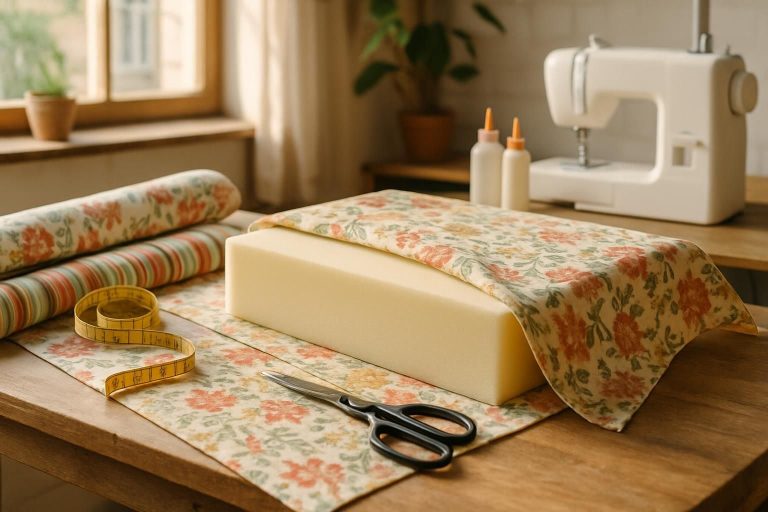The number of cushions placed on a sofa influences, more than one might think, both its comfort and overall aesthetic. A minimum of cushions may seem insufficient to dress the seating and add dimension to the room, while an excess risks cluttering the space and visually weighing down the furniture. Finding the right balance between functionality and decoration is therefore essential to transforming a simple sofa into a warm invitation for relaxation. This subtle arrangement considers not only the size of the sofa – two-seater, three-seater, or corner – but also the layout, colours, textures, and even the time of year. Thus, the ideal number of cushions becomes a key element in creating a welcoming, polished, and stylish atmosphere 🛋️.
How many cushions on a sofa? Tips for perfect balance between comfort and decoration 🛋️
Ideal number of cushions based on sofa size: two-seater, three-seater, corner sofa
Two-seater sofa: how many cushions for a harmonious look?
For a two-seater sofa, it is recommended to opt for a minimum of 2 to 4 cushions. This choice prevents overloading a small space while adding a pleasing visual and comfortable touch. The goal is to complement the sofa’s modest size with a proportionate number of cushions, playing with symmetry or a slight asymmetry to maintain a lovely balance.
-
2 cushions: a sleek yet inviting style, perfect for simplicity.
-
3 cushions: a modern balance, adding subtle variety in shapes.
-
4 cushions: a deeper effect, providing more volume while remaining controlled.
Beyond quantity, it’s important to choose appropriate sizes and textures to avoid overwhelming the overall look, for example, mixing a large square cushion with smaller rectangular ones.
Recommended number of cushions for a three-seater sofa: the right balance
For a three-seater sofa, the suggested range is between 3 and 6 cushions. This depends on the available space and the visual volume to manage. Fewer than 3 may feel too sparse, while more than 6 could disrupt ergonomics and make the look feel cramped.
Some concrete examples:
-
3 cushions: simple and airy appearance.
-
4 cushions: symmetrical arrangement for a chic and organized detail.
-
5 cushions: relaxed touch, mixing sizes and textures.
-
6 cushions: maximum comfort, ideal if the sofa is very deep.
Optimizing cushion arrangement on a corner sofa without overloading
The corner sofa offers a generous seating area, allowing for an increase in cushions from 4 to 9 without sacrificing comfort. The challenge here is to maintain visual cohesion by playing with well-distributed groups.
An effective strategy involves organizing cushions into small groups, for example:
-
3 cushions at the back of each corner
-
One or two cushions placed at the centre to balance the arrangement
A well-planned layout avoids making the sofa look cluttered and fosters a sense of controlled visual weight, while offering adjustable support.
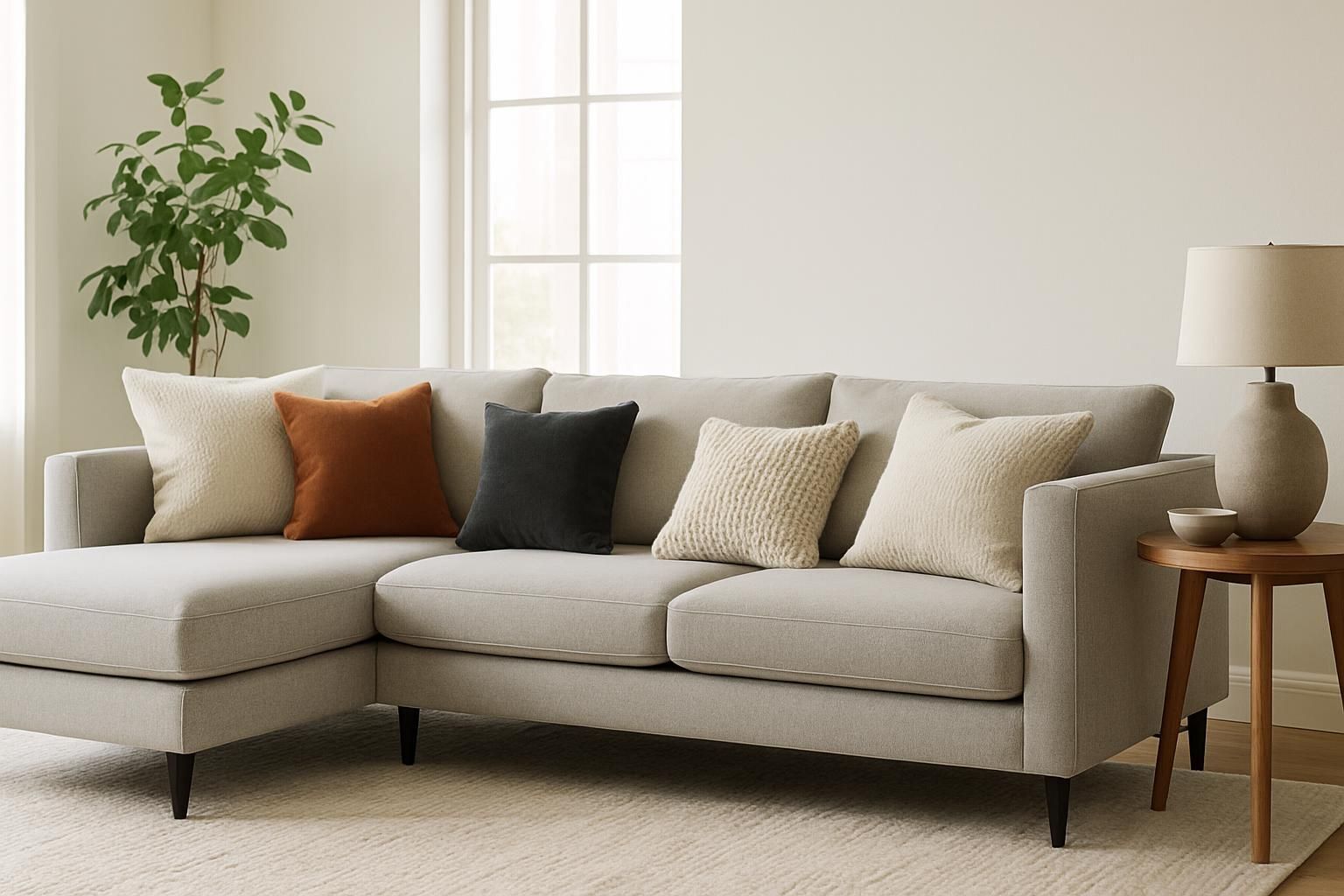
Understanding why cushion numbers vary according to use and size
The number of cushions is not only a matter of space but also a practical choice related to how the sofa is used. For example:
-
A frequently used sofa may require fewer cushions to ensure a clear and comfortable seat.
-
A sofa for reading or relaxing might accommodate more cushions, which then serve as lumbar supports or makeshift armrests.
-
Dimensions of the sofa dictate the volume and visual impact achievable for harmonious decor.
Therefore, the number of cushions should always be considered in relation to the context of use and the actual size to ensure perfect balance.
| Type of sofa | Recommended number of cushions 🧸 | Key arrangement principles |
|---|---|---|
| 2-seater | 2 to 4 | Symmetry or slight asymmetry, varied sizes, avoid overloading |
| 3-seater | 3 to 6 | Simple, symmetrical, or relaxed with mixed textures |
| Corner sofa | 4 to 9 | Grouped cushions, balanced visual weight, aesthetic cohesion |
Ideas for arranging cushions on your sofa
How to place 2 to 4 cushions on a two-seater sofa: symmetry and minimal style
The layout on a two-seater sofa often aims to highlight simplicity by playing on symmetry or a slight harmonious offset:
-
Two identical cushions at each end for a classic and orderly look.
-
Three cushions with a smaller central one or with a different pattern for a modern touch.
-
Four cushions arranged in symmetrical pairs, alternating colours and textures.
The secret lies in choosing cushions that are neither too bulky nor too flat, to maintain comfort without distorting the sofa’s line.
Cushion configurations for a three-seater sofa: simple, symmetrical, or relaxed
The variety of configurations for a three-seater sofa allows you to adjust the style according to the desired ambiance:
-
3 cushions: a clean design, where each cushion corresponds to a seat, creating a clear style.
-
4 cushions: a symmetrical trend with two cushions on each side, essential for order and precision.
-
5 cushions: a relaxed mix with different sizes and textures, evoking a lively and welcoming style.
-
6 cushions: for deep sofas, a layered look with smaller cushions in front of larger ones for added depth.
Arranging cushions on a corner sofa: tips for visual cohesion
The main challenge for a corner sofa is distributing the cushion volume without creating a cluttered effect. Here are some tips:
-
Create groups of 3 cushions in each section of the sofa.
-
Vary sizes to prioritize depth: large cushions at the back, smaller ones in front.
-
Choose colours and textures that are cohesive for visual unity.
A well-thought-out arrangement allows for rhythm on a wide seat while maintaining comfort.
What cushion formats, sizes, and textures to prefer for a warm effect?
To create a warm harmony, it is essential to focus on different textures and formats:
-
Large square cushions (50×50 cm) placed at the back for structure and support.
-
Smaller rectangular or round cushions in front to soften the look.
-
Mix of materials: velvet for softness, linen for freshness, wool for winter warmth.
-
Alternating solid colours and prints to maintain a visual balance without overload.
This combination of volumes and materials imparts a style that is both cozy and refined, inviting conviviality.
|
Type of cushion |
Recommended dimensions |
Function & aesthetic impact |
|---|---|---|
|
Large square |
50×50 cm |
Shapes the sofa, supports the back |
|
Rectangular |
30×50 cm |
Adds depth, ideal for lumbar support |
|
Small round |
30 cm diameter |
Decorative elements, softening the line |
The decor and practical criteria for choosing the right number of cushions
Colors, textures, and patterns: creating visual harmony with your cushions
The colours and patterns selected for cushions largely define the aesthetic and style of your living room. For a harmonious ambiance:
-
Adopt a coherent palette: soft monochromes, tone-on-tone or controlled vibrant contrasts.
-
Subtly combine solids and prints for a balanced and generous style 🎨.
-
Consider the dominant hue of the sofa, walls, and surrounding elements.
-
Play with textures to enhance visual and tactile relief.
This interplay of contrasts and nuances enriches the decor without overwhelming, allowing the personality of the sofa to shine through.
Ergonomics and comfort: avoid cluttering the seating area, tips for a welcoming sofa
Comfort should never be sacrificed for aesthetics. It is important to:
-
Avoid overcrowding the seating space with too many cushions 🚫.
-
Opt for sizes suitable for the sofa’s depth and the type of padding.
-
Include cushions dedicated to lumbar support for better posture.
-
Assess usage frequency to prevent arrangements that are difficult to move or adjust.
By following these guidelines, the sofa remains a natural invitation to rest, conversation, or reading.
Adjusting cushion arrangements seasonally and easily refreshing your style
The arrangement of cushions can evolve to match the seasons, bringing new life to the room without replacing the furniture:
-
Summers: light fabrics (linen, cotton) and bright or pastel colours ☀️.
-
Winters: thick textures (velvet, wool) and deep shades (burgundy, forest green) ❄️.
-
Simply change covers for a quick and eco-friendly update.
-
Reduce the number of cushions in summer for a more airy look.
This aesthetic flexibility ensures a feeling of novelty effortlessly — a simple way to adapt the decor over time.
Maintaining and preserving the beauty of cushions: rotation, cleaning, interchangeable covers
To keep cushions looking bright and feeling comfortable:
-
Regular rotation to prevent uneven wear.
-
Cleaning suited to the materials: machine washing, dry cleaning as appropriate.
-
Opt for removable covers to facilitate storage and replacement.
-
Occasional re-padding to restore volume and softness.
Proper maintenance ensures longevity and consistency in the aesthetic appearance, while also supporting the durability of your decor.
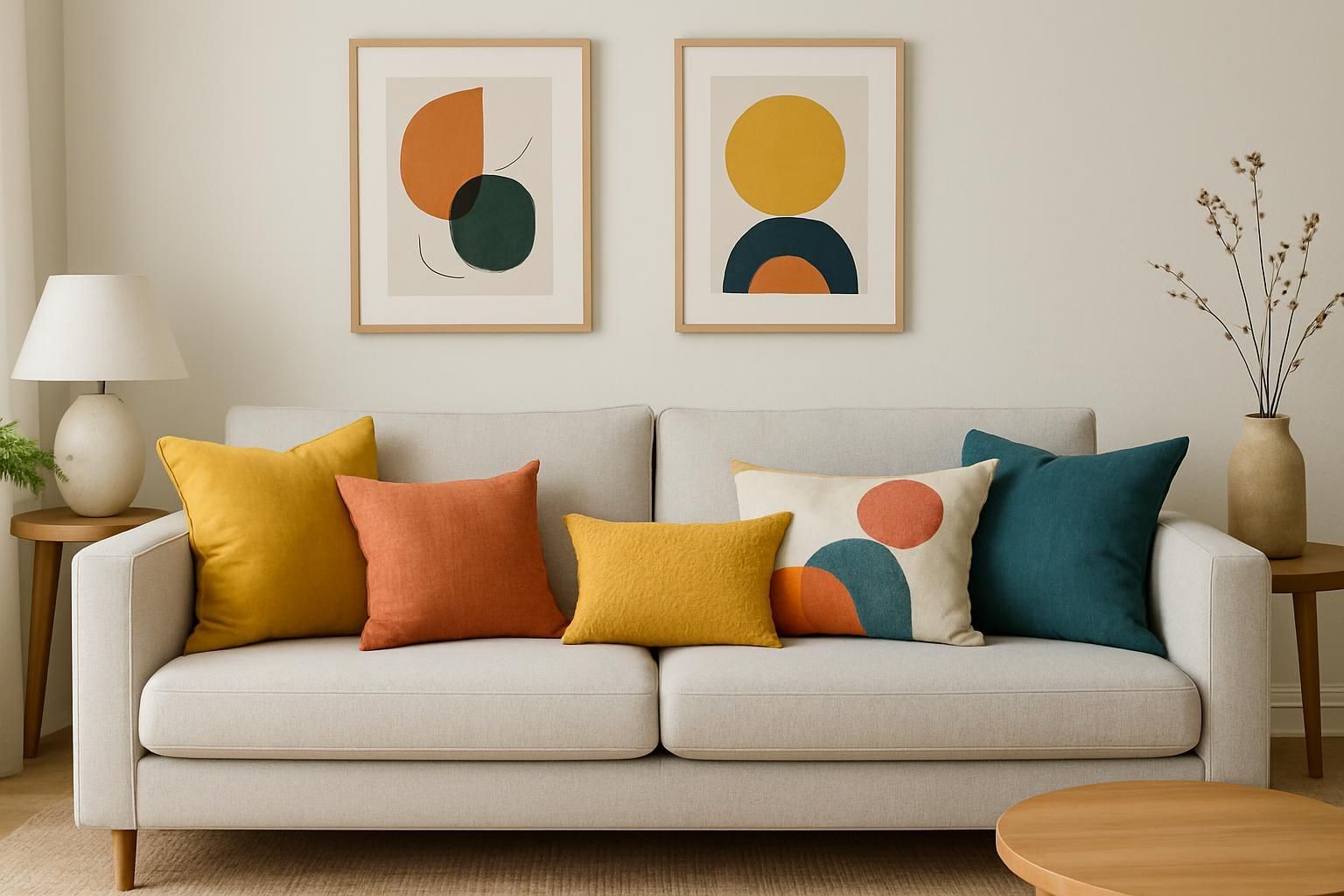
FAQ: How many cushions on a sofa?
What is the ideal number of cushions for a 2-seater sofa?
Between 2 and 4 cushions help to dress a 2-seater sofa without overloading, playing with symmetry or slight asymmetry for visual interest.
How to choose the arrangement of cushions on a sectional sofa?
It’s recommended to distribute cushions in groups, often of 3 pieces per corner, varying sizes and textures to balance volume and aesthetic cohesion.
Which decor criteria should influence cushion choices?
Colors, textures, and patterns should form a harmonious palette with the sofa and surroundings to create a visually stimulating and welcoming balance.
Is it easy to change the ambiance using cushions?
Yes, with interchangeable covers and a modular arrangement, cushions can follow the seasons and your preferences to quickly refresh the style.
How to maintain comfort while having multiple cushions?
Avoid overcrowding the seat, choose appropriately sized cushions, and include lumbar support cushions to maximise comfort while enhancing the decor.
